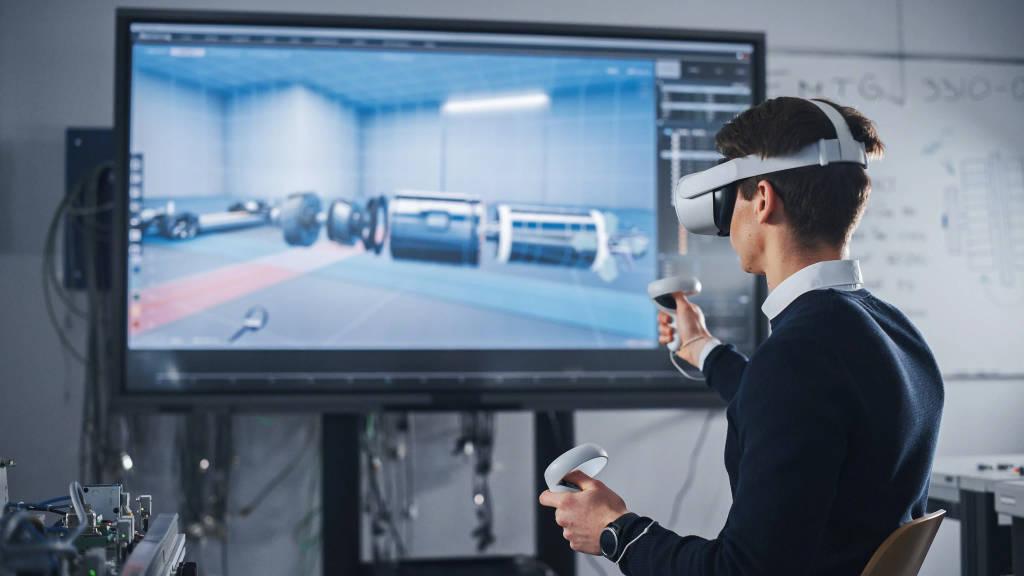Augmented Reality and Virtual Reality Market Insights Highlight Rapid Adoption in Retail and Education Sectors

The augmented reality and virtual reality market has entered a transformative era, no longer confined to niche applications or early adopters. In 2025, AR and VR technologies are experiencing widespread acceptance, driven by innovation, investment, and an evolving digital-first mindset. A detailed analysis of this fast-growing market reveals the forces shaping its trajectory, the sectors leading the charge, and the strategic opportunities that lie ahead.
Current Market Overview
The global AR and VR market is growing at a rapid pace, with a projected valuation of over $100 billion by 2026. While the two technologies are often grouped together, their applications and adoption patterns vary significantly. VR, which immerses users in fully simulated environments, has seen major traction in gaming, education, and enterprise training. AR, which overlays digital content onto the physical world, is gaining broader appeal due to its integration into smartphones, tablets, and emerging wearable devices.
The market is characterized by a convergence of hardware innovation, software development, and content creation. As these three pillars strengthen and align, the user base is expanding across both consumer and enterprise segments.
Key Growth Segments
1. Consumer Applications
The consumer market continues to be a major revenue generator, especially in entertainment and gaming. VR headsets like Meta Quest, Sony’s PlayStation VR2, and PC-tethered systems are delivering high-fidelity experiences that are redefining digital entertainment. AR is also making strides in mobile apps, from gaming (e.g., Pokémon Go) to retail (e.g., AR-enabled product visualization).
Moreover, fashion and cosmetics brands are embracing AR for virtual try-ons, while social media platforms integrate AR lenses and filters to boost user engagement. These applications are reshaping consumer expectations and setting a new standard for interactive content.
2. Enterprise and Industrial Adoption
Enterprise adoption is one of the most significant drivers of AR and VR market growth. Businesses across industries including manufacturing, healthcare, logistics, real estate, and education are leveraging immersive technologies for training, simulation, design, and maintenance.
In manufacturing, AR is being used for step-by-step operational guidance, reducing human error and training time. VR is proving valuable for employee onboarding and safety training in high-risk environments. In healthcare, applications range from surgical planning and diagnostics to patient therapy and pain management.
These real-world applications not only enhance productivity and reduce operational costs but also demonstrate the long-term value and return on investment of immersive technologies.
Market Drivers
Several underlying factors are fueling the AR and VR market:
-
Technological Innovation: Advancements in processors, sensors, displays, and haptic feedback are delivering more realistic and responsive experiences.
-
5G and Cloud Computing: Improved bandwidth and latency from 5G, combined with cloud infrastructure, enable real-time rendering and content delivery on lightweight devices.
-
AI Integration: Artificial intelligence enhances AR/VR functionality through real-time scene understanding, object detection, and adaptive interfaces.
-
Post-Pandemic Digital Transformation: The acceleration of digital initiatives post-COVID has fast-tracked AR/VR adoption in education, remote work, and healthcare.
Competitive Landscape
The market is highly competitive, with major tech giants investing heavily in AR and VR ecosystems. Meta continues to lead in the consumer VR space, while Apple’s entry with the Vision Pro is expected to disrupt the mixed reality segment. Microsoft, with HoloLens, remains a dominant player in enterprise AR.
At the same time, a growing number of startups and mid-sized firms are innovating in content creation, platform development, and vertical-specific applications, contributing to a diverse and dynamic ecosystem.
Challenges Ahead
Despite the momentum, several challenges must be addressed:
-
Hardware Barriers: High costs, limited battery life, and bulky designs still hinder widespread adoption.
-
Content Shortage: There is a pressing need for compelling, high-quality AR and VR content to attract and retain users.
-
Privacy and Ethics: As AR and VR become more pervasive, concerns around data privacy, user consent, and psychological impacts will require regulatory and ethical oversight.
Looking Ahead
The AR and VR market is at an inflection point. What was once a curiosity is now a critical component of digital strategy across sectors. As hardware becomes more refined, platforms more intelligent, and content more immersive, the potential for growth is vast.
Strategic investment in content development, user experience, and scalable infrastructure will be key for businesses seeking to lead in this space. Meanwhile, understanding and responding to market trends and user behavior will be critical to unlocking the full potential of immersive technology.
In summary, the AR and VR market in 2025 reflects a maturing ecosystem with strong growth potential and increasing real-world relevance. For forward-looking organizations, the time to engage with immersive tech is not in the future it’s now.
- Art
- Causes
- Crafts
- Dance
- Drinks
- Film
- Fitness
- Food
- Игры
- Gardening
- Health
- Главная
- Literature
- Music
- Networking
- Другое
- Party
- Religion
- Shopping
- Sports
- Theater
- Wellness


